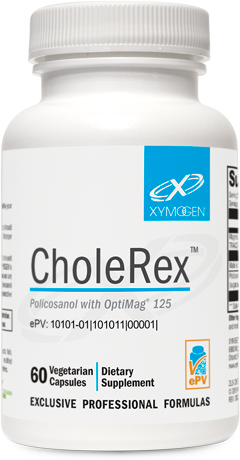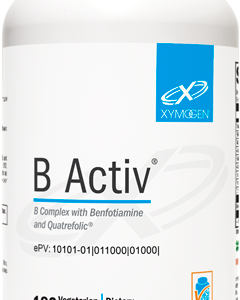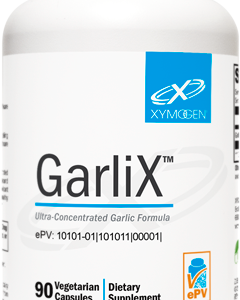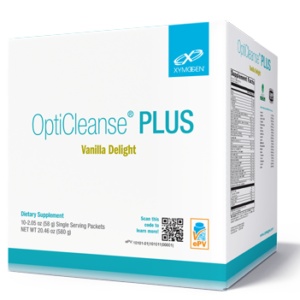Scientific Information/Data
CholeRex™ is an exclusive formula that features MagniSol™, a proprietary blend of policosanol from sugar cane extract and a revolutionary magnesium amino acid chelate and mineral complex produced by an innovative patented process and designed to give maximum absorption. Each capsule provides 10 mg of policosanol and 100 mg of elemental magnesium.* An impressive body of research suggests that both policosanol and magnesium may provide significant cardioprotective benefits. CholeRex™ with MagniSol™, along with regular exercise and a nutritious diet may be an effective way to help to maintain healthy blood lipid levels and good cardiovascular function.*
Powerful, Natural Support for Blood Lipids The powerful, beneficial effect of policosanol on blood lipids has been extensively studied in both humans and animals, and its effectiveness has been compared to several commonly prescribed lipid-modifying agents. Policosanol appears to have a modulating effect on hydroxymethylglutaryl co-enzyme A (HMG-CoA) reductase activity, a rate-limiting enzyme for endogenous cholesterol synthesis. This enzyme catalyzes the reduction of HMG-CoA to mevalonate, the key metabolite of cholesterol biosynthesis. Policosanol is believed to affect HMG-CoA reductase activity by depressing its synthesis and/ or via stimulation of its degradation. Additionally, policosanol has been shown to promote binding, uptake, and degradation of low-density lipoproteins (LDL).* Studies suggests that policosanol at a dose range of 5 to 20 mg per day is effective for promoting healthy blood lipid synthesis and metabolism. Policosanol has an excellent safety profile with reports of only mild or no side effects. Furthermore, animal toxicity data indicates that policosanol demonstrates no toxic effects, even at doses many hundred times greater than the maximum dose recommended for humans.*
Additional Cardiovascular Benefits of Policosanol In addition to its effect on blood lipid levels, policosanol has demonstrated positive effects on several other risk factors associated with cardiovascular disease. For instance, studies have shown that it may prevent lipid peroxidation of LDL, inhibit smooth muscle cell proliferation, exert a protective effect on vascular endothelium, and promote healthy platelet function, possibly through a decrease in the production of thromboxane A2 and B2. These additional actions can have a beneficial effect on blood vessel integrity and function and thus promote overall cardiovascular health.*
Magnesium and Cardiovascular Health Magnesium is a vital nutrient that is essential to the proper functioning of the entire cardiovascular system. It is necessary for nearly every major physiologic process in the body and plays an important role in the regulation of muscle contraction, heartbeat, nerve transmission, and vascular tone.* Magnesium deficiency is widely recognized as a contributing factor in the etiology of heart disease and commonly occurs with conditions such as arrhythmia, hypertension, myocardial infarction, and mitral valve prolapse. In experimental studies, low plasma levels of magnesium have been shown to accelerate atherogenesis by increasing concentrations of LDL and peroxidized lipoproteins, and by promoting nflammation. Additionally, magnesium deficiency is known to contribute to an imbalance of electrolytes, such as Na+, K+, and Ca2+, which can negatively affect myocardial function.* Magnesium supplementation has been shown to benefit patients with cardiac arrhythmia and hypertension, improve endothelial function in patients with coronary artery disease, and increase the survival rate of patients with congestive heart failure.*
*These statements have not been evaluated by the Food and Drug Administration. This product is not intended to diagnose, treat, cure, or prevent any disease.
References
1. Arruzazabala ML, Mas R, Molina V, et al. Effect of policosanol on platelet aggregation in type II hypercholesterolemic patients. Int J Tissue React
1998;20(4):119-24
2. Arruzazabala ML, Molina V, Carbajal D, et al. Effect of policosanol on cerebral ischemia in Mongolian gerbils: role of prostacyclin and thromboxane A2. Prostaglandins Leukot Essent Fatty Acids 1993;49:695-97
3. Arruzazabala ML, Molina V, Mas R, Fernandez L, et al. Antiplatelet effects of policosanol (20 and 40 mg/day) in healthy volunteers and dyslipidaemic patients. Clin Exp Pharmacol Physiol 2002 Oct;29(10):891-7
4. Arruzazabala ML, Noa M, Menendez R, et al. Protective effect of policosanol on atherosclerotic lesions in rabbits with exogenous hypercholesterolemia. Braz J Med Biol Res 2000;33:835-40
5. Batista J, Stusser R, Saez F, et al. Effect of policosanol on hyperlipidemia and coronary heart disease in middle-aged patients. A 14-month study. Int J Clin Pharmacol Ther 1996;34(3):134-37
6. Castano G, Mas R, Fernandez L, Gamez, Illnait J. Effects of policosanol and lovastatin in patients with intermittent claudication: a double-blind comparative pilot study. Angiology 2003 Jan;54(1):25-38
7. Chakraborti S, Chakraborti T, Mandal M, Mandal A, Das S, Ghosh S. Protective role of magnesium in cardiovascular diseases: a review. Mol Cell Biochem 2002 Sep;238(1-2):163-79
8. Gouni-Berhold I, Berthold HK. Policosanol: clinical pharmacology and therapeutic significance of a new lipid-lowering agent. Am Heart J 2002 Feb;143(2):356-65
9. Maier JA. Low magnesium and atherosclerosis: an evidence-based link. Mol Aspects Med 2003 Feb 6;24(1-3):137-46
10. Menendez R, Arnor AM, Rodeiro I, et al. Policosanol modulates HMG-CoA reductase activity in cultured fibroblasts. Archives Med Res 2001;32:8-12
11. Menendez R, Mas, R, Armor AM, et al. Effect of policosanol on the susceptibility of low density lipoprotein (LDL) isolated from healthy volunteers to oxidative modification in vitro. Br J Clin Pharmacol 2000;50:255-62
12. Mesa AR, Mas R, Noa M, et al. Toxicity of policosanol in beagle dogs: one-year study. Toxicol Lett 1994;73(2):81-90
13. Zhang Y, Davies LR, Martin SM, Bawaney Im, Buettner GR, Kerber RE. Magnesium reduces free radical concentration and preserves left ventricular function after direct current shocks. Resuscitation 2003 Feb;56(2):199-206







Reviews
There are no reviews yet.